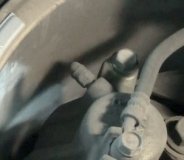Absolutely. Rebuilding calipers and wheel cylinders as part of a standard brake job goes back to the '70s and '80s. GM had probably the least trouble with calipers at that time, but rebuilding them was still standard practice because professionally-rebuilt calipers from the auto parts stores were horribly expensive.
The reason we replace calipers today is they're relatively inexpensive, and it's cheap insurance for us to provide a quality brake job. Even still, today most manufacturers have very little trouble with their calipers. The thing to watch for is you'll need to press the pistons in to make room for the new, thicker pads. Many people do that with a C-clamp, but if that is what you have to resort to, replace the calipers. There's crud and debris settled at the bottom of the housing, and you're trying to run the piston over that stuff. It's going to cause dragging and overheating brakes. I use a large flat-blade screwdriver to pry the pistons back in before I remove the calipers. If the pistons slide in easily with one hand, they're not going to be stuck on any debris and will continue working just fine.
You can buy caliper rebuild kits too, but doing that job is a lost art. The cost of professionally-rebuilt calipers is too low to bother trying to do a good job rebuilding them yourself.
A professional brake job involves a real lot more than simply slapping on new pads and rotors. There's a lot of things a competent do-it-yourselfer can do to cause problems, and a lot of things professionals do to prevent problems. Before we go any further, take a look at these articles to familiarize yourself to this job:
https://www.2carpros.com/articles/how-to-replace-front-brake-pads-and-rotors-fwd
https://www.2carpros.com/articles/how-to-replace-rear-brake-shoes-and-drums
This video also is a good resource:
https://youtu.be/1dB17cMwSOQ
As for the rotors, there is a legal minimum thickness they can be machined to, and a slightly thinner legal thickness they can be allowed to wear to. Take the old rotors to an auto parts store to have them checked. If they can be machined and still be at least the minimum thickness, they can do that for you. Many repair shops don't do that any more because the cost of new rotors has become so low, the cost of machining old ones is higher, and / or with little benefit.
Some of the hints to a good brake job include not getting fingerprint grease or any other contaminants on the new linings or on the rotors' friction surfaces. If you do, wash it off right away with Brake Parts Cleaner. Once those parts go through their first heat cycle, any contaminants will soak into the porous cast iron rotors and the linings and will never come out. That will set up a horrendous brake squeal.
Use a special brake grease on the rears of the pads where they contact the pistons and calipers. All brake pads are going to vibrate. Grease in those areas lets them do this without transmitting those vibrations to the calipers where they would be amplified and heard as a squeal. Use only high-temperature brake grease. It is designed to not travel like regular petroleum-based grease does.
Every mounting point for the calipers needs that grease too to insure they can slide freely to self-adjust. If any caliper mounting bolts have rust pits and the chrome plating is lifted, those parts must be replaced to prevent the caliper from sticking. Also coat those bolts with brake grease.
Scrub the hub on the wheel bearing, and use brake grease around the rotor's center hole. Dirt and rust there can cause a crunching sound when going around corners. Brake grease prevents that.
Grease on the wheel studs isn't necessary, and should never be used on anodized studs. That is a coating that grease melts, leading to seized lug nuts the next time they're removed. The anodized coating is a lubricant. Those studs will have a light blue, silver, or yellow color. Absolutely no anti-seize compound on wheel studs. That will result in wheels coming loose. If you do use grease on regular studs, it must be a very light coating, then run the lug nuts on by hand. Spinning them on with air tools will cause that grease to build up ahead of the nut, then be flung out on the nuts' friction surface. Those friction surfaces must remain free of any lubricant because that's what keeps the nuts tight.
Use a click-type torque wrench to tighten the lug nuts. That insures the rotor is clamped with even force on all sides to reduce warping, the threads won't be damaged, the nuts will remain tight, and they'll be easy to remove if you have to replace a flat tire on the side of the road when you have limited tools.
The typical lug nut torque spec is usually around 95 foot-pounds when you have steel wheels, and often 85 foot-pounds with cast wheels. I checked three different sources, and all three list 140 foot-pounds for your vehicle, and many other GM models. That is considerably higher than what most large pick-up trucks call for, and some people think that is a mistake and should have been "140 newton-meters", a metric specification. One fellow bent his tool supplied by GM while trying to loosen the nuts after they were tightened that much. I suggest you check in your owner's manual to be sure. I've never seen torque specs that high, even for rear wheels on dually-diesel trucks.
Saturday, July 24th, 2021 AT 8:18 PM


